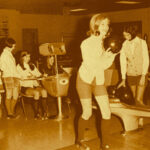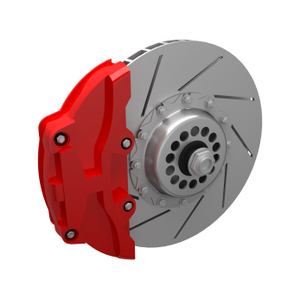I just could not ignore it any longer..it was time for a brake job on my old jalopy. This old truck had disk pads on the front..but drum brakes on the rear. And drum brakes are not known for keeping in good adjustment.
I stopped by the auto parts store and got some new brakes shoes, a couple cans of brake fluid and while I was at it..a rebuild kit for the brake cylinders and a parts package for the whole rear brake system. Arriving back at the house I got together the tools I knew I would need for the job. First and foremost..a hydraulic jack to lift the truck off the ground. A four way lug wrench and a cheater bar to break loose the lug nuts. A couple of sturdy flat blade screw drivers to pry the wheel drum off and finally, an assortment of pliers for pulling the springs and connectors off and for later..putting them back on.
With the truck hoisted up and one wheel off I was now using the screwdrivers to pry the drum off. This is not too hard. You wedge one screwdriver in behind the drum and the backing plate on either side…and pry the thing away..and then off.
What I now saw was the worn out brake shoes and the assortment of springs to retract the shoes after they have been pushed out by the brake cylinders. Also mingled in with all of that, there was an auto adjuster and a device to allow the parking brake to be operated.
When faced with so many parts it is a good idea to make a quick sketch of what goes where. Even going so far as to take a photograph. Some parts, especially springs..can go back in either of two ways..but only one way is correct. Putting stuff back on, in an incorrect manner can cause you to have non-functioning brakes, loss of brake fluid, or an inoperative parking brake and when brakes are involved..you don’t want anything to be amiss.
My sketch finished, it was time to begin removing parts. A good pair of pliers allowed me to pop off the retractor springs and once that was done, the adjuster fell right out…as it should. A different set of pliers allowed me to remove the retaining springs, pins and backing washers for the brake shoes themselves and then they fell off as well. That left only the parking brake cable plate and wheel cylinder still present.
Given the age of this truck I was now glad I had also purchased a parts replacement package for this job. It contained new springs, backing washers and all the parts needed to replace all the moving parts in that brake assembly for both sides. A look at the retaining pins showed them to be worn nearly in half. This job was long overdue.
Carefully I removed the flexible boots from both ends of the wheel cylinder. This little device is what actually forces the brakes to expand out and contact the rotating drum while driving…pressing the shoes against the drum..and thus slowing the vehicle speed. Inside are two little steel pistons and a spring. When you step on the brake, hydraulic fluid is forced in the cylinder…where it encounters the pistons and forces them out and away…since the pistons are touching the brake shoes..the shoes move right along as well. And that is how your brakes work. When you release the brake pedal, the retracting springs pull the shoes back into their original positions.
Pushing these pistons out is no trouble and once out, I begin losing brake fluid as well. I need to finish this portion of the job quickly so as to not drain the system of fluid completely. Taking a used rag I let it soak up some brake fluid and once wet I sprinkle a household abrasive cleanser on it. Something like Ajax or Comet works just fine. The idea here is to scour the internal surface of the cylinder just enough to remove rust or corrosion and other debris or imperfections that tend to accumulate over time. This done I run a clean paper towel through the cylinder to remove all traces of the abrasive cleanser and then carefully insert the new pistons and spring. I replace the nylon boots back over the ends of the cylinder..and just like that..no more fluid loss, and the cylinder is back in top notch condition again.
Looking into my parts package I next select the retaining pins, backing washers and springs I will need to attach the new brake shoes to the backing plate. These little hickeys do nothing more than keep the shoes in place and prevent them from falling into an incorrect position. Once done with this, I place the parking brake in position again, and after cleaning and applying a minute amount of grease to it’s threads, I place the adjuster where it should go and using my pliers again, I hook each spring into position and then stretch it to it’s proper anchor point. I use a light hammer to tap the shoes here and there to get them into a good position to where the brake drum will slide over them and back into position.
It’s the same story for the other side and after finishing over there I will bleed the brake system for the rear to remove any air that has remained in the lines. Once done with that I will lay behind each wheel and manually adjust the shoes out until they are just barely touching the brake drum. This will insure that when my foot presses the brake pedal, the shoes will be right there and ready to slow me down. Before putting my tools away I remember to put the old brake shoes and the purchase receipt in the box the new shoes came in. Auto parts stores charge a 5 or 10 dollar core charge to encourage you to return the used shoes. This way, a new brake lining can be attached to the old steel framework for the old shoes..and they can then sell a new pair of brake shoes to their next customer.





